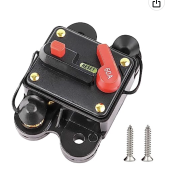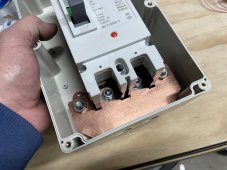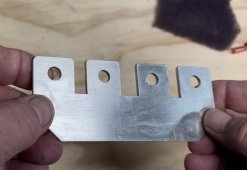Two 345 w panels = 690 W ie pretty low energy level, but you didn't say what voltage you are working with? at 12volt this and be 57.5A (ie quite high)
on the battey to inverter to load side, you don't say what power those loads draw either. Are they lights and USB chargers or electric kettles?
I have used one of these small units for a 12v system connected to one automotive L-Acid battery and one 150W PV panel and have had no problems with it over a 5-6 year run time. That said, I use this small system for very small loads like cordless tool chargers and cell phone/computer USB, and one small LED light, so the loads are very low wattage.
These small disconnect units are designed for boats (I bought it from a boat supply place) and they are not suitable for 48 volt systems (that operate from 42-58 volts) so you need to assess.
One thing to consider, what is the risk if something 'bad' happens: is this equipment operating in your home or in a place where you leave it operational and unattended for long periods? I can say my switch has only been used in a small cabin set up with me personnally near-by during it's use, and it is off line when I leave (since I take the battery with me!) but your situation may be quite different. The cost difference to a high quality DC rated disconnect is small compared to a potential loss of property. Your stuff, your situation, your decision.







